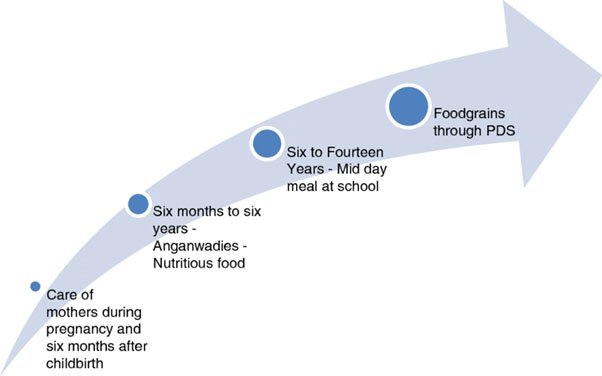National Food Security ACT, 2013 (NFSA)
Why in news : Recently, there were various findings in many states showing that the grains distributed under Public Distribution System are not fit for human consumption.
Facts about the scheme, NFSA, 2013:
- The act was introduced with the objective to provide food and nutritional security in human life cycle approach to the people.
- It ensures access to adequate quantity of quality food at affordable prices to people to live a life with dignity.
- It changed the perspective of welfare based approach towards to rights based approach.

Lifecycle approach National Food Security Act, 2013
Salient features of the National Food Security Act, 2013
- Coverage under the targeted public distribution system (TPDS) : Upto 75% of the rural population and 50% of the urban population will be covered under TPDS.
- Entitlements under the act : There is uniform entitlement of 5 kg per person per month. But, Antyodaya Anna Yojana (AAY) households are presently entitled to 35 kg per household per month.
- Subsidised prices under TPDS : Foodgrains under TPDS will be made available at subsidised prices of Rs. 3/2/1 per kg for rice, wheat and coarse grains respectively.
- Identification of Households : the identification of the eligible households will be done by the respective state governments.
- Maternity Benefit : Pregnant women and lactating mothers will also be entitled to receive maternity benefit of not less than Rs. 6,000.
- Nutritional Support to women and children : Pregnant women and lactating mothers and children in the age group of 6 months to 14 years will be entitled to meals as per prescribed nutritional norms under Integrated Child Development Services (ICDS) and Mid-Day Meal (MDM) schemes.
- Women Empowerment : Eldest woman of the household of age 18 years or above to be the head of the household for the purpose of issuing of ration cards.
Syllabus : prelims+mains; mains – GS 2 – Governance; various schemes in news


